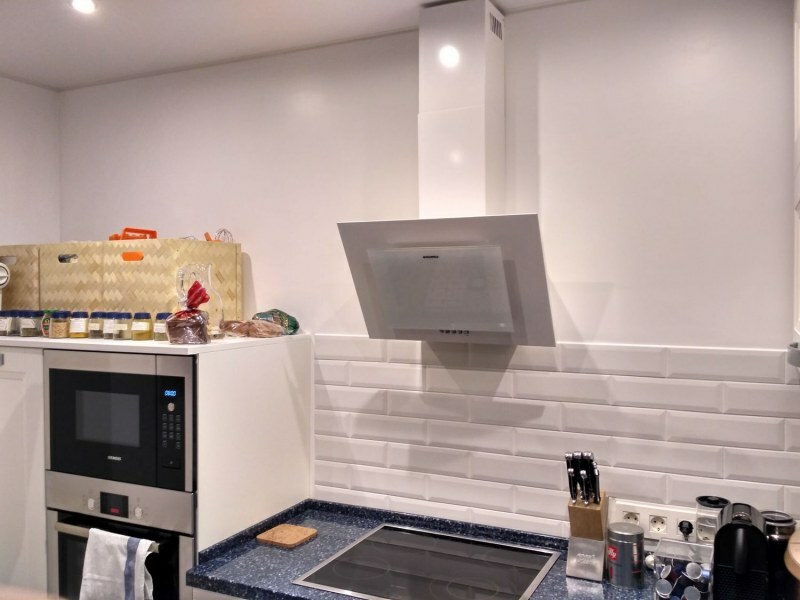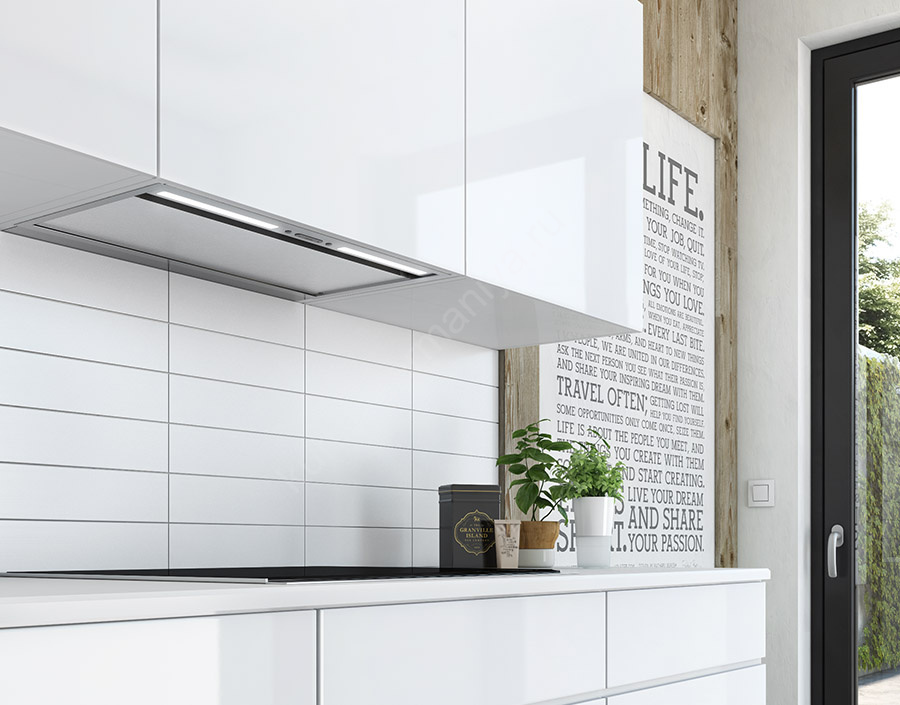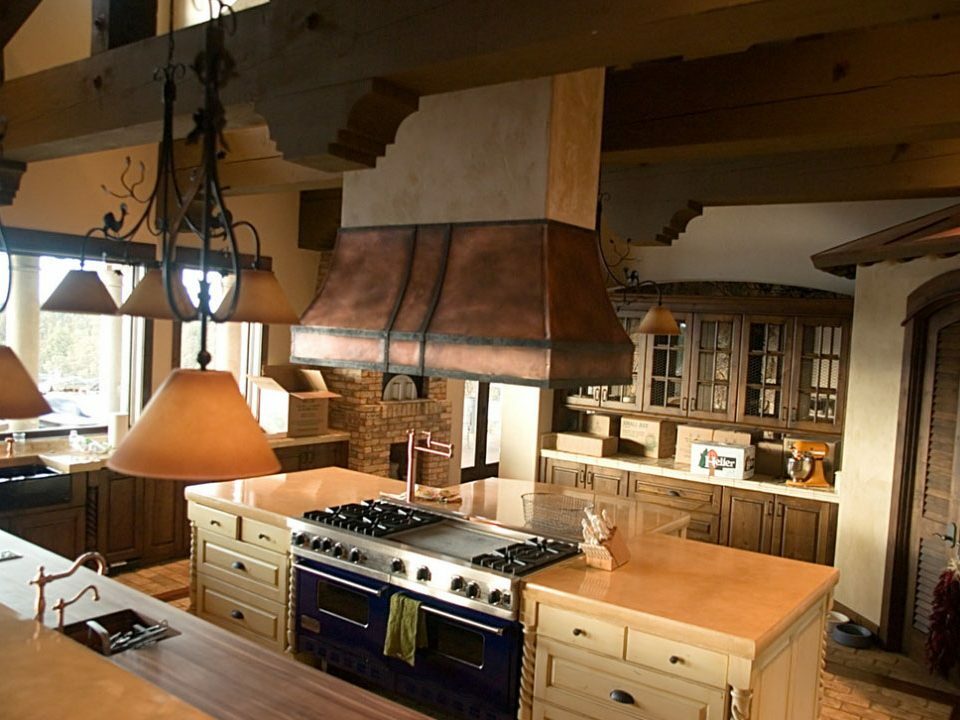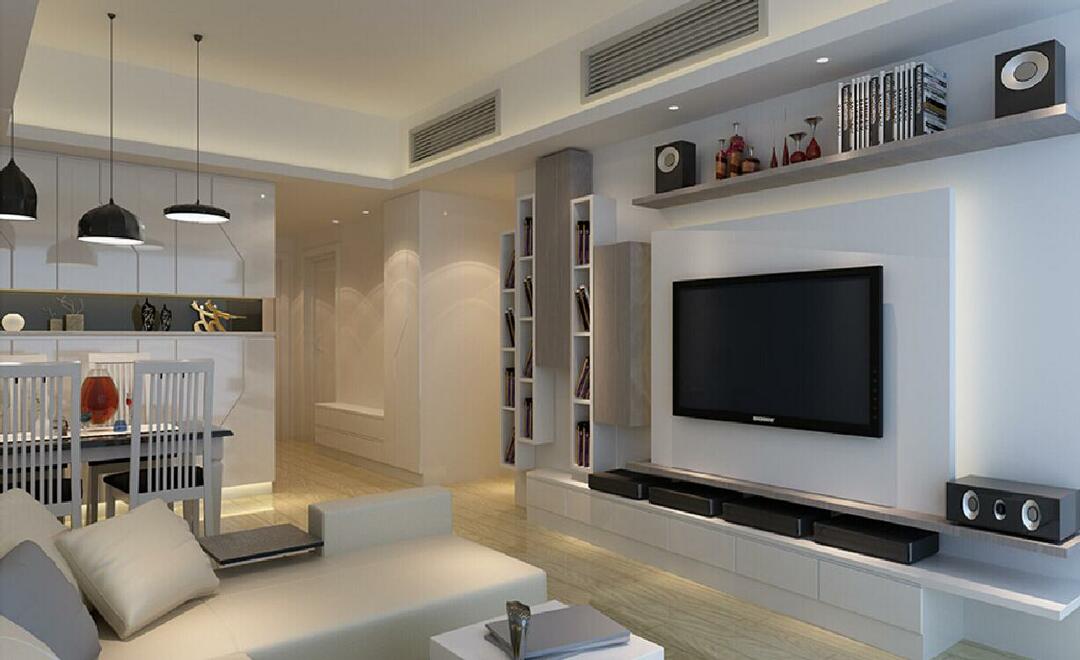Any odors from the cooking process should not leave the kitchen. Agree that the aroma of even the most delicious homemade pie has no place in the living room or bedroom. Good exhaust equipment can easily cope with the aromas of even the most difficult dishes and effectively purify the air. Knowing how to choose a hood over a gas stove, any housewife will be able to create her own culinary masterpieces without fear of filling the apartment with unwanted odors.
In this publication, we will consider the types of kitchen hoods, determine their advantages and disadvantages, we will tell you about the intricacies of the selection of the optimal model and the principles of calculating the required performance equipment.
The content of the article:
- What tasks does the hood solve?
-
Types of hoods for gas stoves
- Recirculating cooker hoods
- Flow or exhaust hoods
- Criteria for choosing a cooker hood
- Calculation of the minimum permissible performance
- Features of installing the hood above the stove
- Conclusions and useful video on the topic
What tasks does the hood solve?
Removing cooking odors is not the only task of a quality cooker hood. In addition, fat particles separated during frying, possible soot and combustion products are carried along with the air flow. Powerful hardware helps keep furniture and kitchen backsplash clean as anything that might settle on work surfaces goes down the duct.
Air purification is another function of the hood. However, this option is not available on every model: only recirculating hoods can clean polluted air, removing all impurities from it, which has a positive effect on the internal microclimate of housing.

Removal of excess moisture, microparticles of fat and soot allows you to create an acceptable microclimate in the kitchen, prevent the appearance of mold and maintain the attractiveness of a fresh renovation for a long time
In addition, hoods for a household gas oven are also a spectacular piece of furniture. Modern models fit perfectly into any popular design: laconic recirculation hoods delicately emphasize the decoration in minimalistic or high-tech style, and powerful dome units become an organic part of both the classic direction and style provence.
Types of hoods for gas stoves
To determine which hood is needed specifically for your gas stove, it is worth understanding their varieties.
According to the principle of air purification, the hoods are divided into: recirculating, with outlet for ventilation and combinedoperating in exhaust or recirculation mode. Let's talk about the first two in more detail.
Recirculating cooker hoods
Air purification in such a hood is due to special filters. The air mass is carried through the air duct, overcomes the coarse grease filter, which retains combustion products and fatty suspension. Then the air, freed from polluting particles, is purified from odors using a special filter - most often coal.
In fact, such a hood "drives" the same air, simply passing it through its filtration system. As a result, the buyer receives roughly purified air, not rid of excess moisture and not enriched with oxygen.

Air movement during recirculation is shown in the diagram. The figure shows how the air flows pass through the filtration system of the suspended hood.
The advantages of such models are their cost, simplicity of design and direct installation, because they do not need to be connected to the ventilation system.
However, there is also a significant disadvantage: the cleaning filter must be changed periodically. The frequency of replacement depends on the manufacturer's recommendations and the intensity of work: the more often you cook, the faster the filter device clogs up. At the same time, recirculation modifications are less efficient.

The recirculating cooker hood sometimes looks more stylish than its flow-through counterparts. Such a model is less bulky and fits perfectly into a laconic interior.
The disadvantages of such hoods pale against the backdrop of a spectacular design. Recirculation models are ideal for small kitchens, as they do not visually overload the already limited space.
We talked in more detail about the recirculation hood device in next article.
Flow or exhaust hoods
These are more complex devices that work on a different principle. The equipment draws in air currents that pass through the duct and are discharged to the outside. They only contain grease filter.
These devices do not work without a ventilation system or direct airflow. This is the main disadvantage of the flow hood: it must be connected to an air duct, which must bring the exhaust air out into the street or into the shaft of the ventilation system.
In addition to the complexity of installation extractor hood with ventilation outlet and is significantly more expensive. However, all this is compensated for by performance: it is the flow-through models that will be able to provide the maximum purification of the air from odors, soot, grease, and excessive moisture.

The difference between flow and recirculation hoods is significant. Exhaust equipment removes exhaust air containing soot, grease and steam generated during cooking
Hoods for slabs are also divided according to the principle of installation. According to this criterion, the technique is divided into three types: built-in, flat suspended and domed.
So, built-in hoods mounted directly into the suspended modules of the kitchen. Usually these are recirculation devices, often with a telescopic retractable design. The main advantage of such a hood is its compactness and inconspicuousness. This model can fit into almost any interior.

Built-in hoods are most often characterized by modest performance. But the ability to visually hide the equipment necessary for the kitchen makes such models one of the most popular.
Flat suspended or sloped hoods also generally operate on the recirculation principle. But there are also flow models, which provide for the removal of polluted air to the street or to the shaft of the ventilation system.
The equipment can be hung under a cabinet or shelf, or mounted as a separate unit.

Visually, suspended hoods look equally good for any type of installation: both as separately hanging structures and as blocks suspended under the headset
Dome or chimney hoods are the most powerful and, alas, the most expensive models.
Such equipment is distinguished by the highest productivity and an abundance of additional options, can be combined - to work, with necessary, in the extraction mode, removing the exhaust air outside the room, or recirculation, cleaning the contaminated air masses and returning them back to the room.

Dome hoods are simply irreplaceable for kitchens where the working area for cooking is located on a separate “island”. However, such a technical and design solution is appropriate only in very spacious rooms.
So which hoods are best suited for gas stoves? Objectively, these are flow-through models with output to the street. During the operation of a gas hob or stove, soot and combustion products are formed gas-air mixture, so it is better to remove the air outside, and it is also important to take care of the correct arrangement ventilation in the kitchen.
For electric hobs, simpler recirculation options are also suitable. They are also appropriate in a kitchen with a gas stove, but the buyer will have to more carefully select a model suitable for his home conditions.
Criteria for choosing a cooker hood
The future owner needs to make a choice in favor of a flow-through, recirculation or combined hood, to decide on the type of installation.

It is worth thinking about how to choose a hood for the design of the finished kitchen. In this regard, built-in appliances remain the most flexible, because they are practically invisible.
Also, the buyer should pay attention to several more important aspects of choosing a hood for a gas stove.
- Exhaust width must be greater than or equal to the width of the slab. Only in this way will the equipment be able to fully capture the streams of polluted air. So, the optimal size of an effective hood over a 60 cm wide gas stove will be a 90 cm wide model.
- Number of speed modes - the more of them are provided in the hood, the more flexible its operation will be.
- Noise levelgenerated by the equipment during operation must be acceptable to the family. Quiet models do not produce sounds louder than 45 dB. The average noise level for a normally operating hood is around 50 dB. You can find out the noise threshold in each operating mode from the instructions or passport for the hood.
- Exhaust control type should be user friendly. Mechanical provides rotary mode switches, electronic is carried out using a sensitive touch panel or remotely thanks to the remote control. Hoods controlled by ordinary buttons are also in demand. However, the gaps between the buttons and the hood body are often dirty, which gives housewives additional inconvenience.
- Advanced optionsfor example, backlighting or the presence of special disinfecting lamps will be a pleasant bonus for a quality model.
Equipment performance - the most important characteristic for the hood, which is worth talking about in more detail. This parameter shows how many cubic meters of air the device can effectively pass through itself in one hour.

There are standard tables for minimum extraction performance. However, for each kitchen room, it is better to accurately calculate this value separately.
The higher the extraction performance, the better. However, with its growth, the noise of the equipment also increases. Selecting a hood according to its performance requires a particularly responsible approach. It is better to calculate in advance the volume of air that needs to be processed by the exhaust device.
Calculation of the minimum permissible performance
In order not to make a mistake in choosing and buy the model that is optimal for your kitchen, you should familiarize yourself with the formula for calculating the performance of the exhaust equipment.
The calculations take place in several stages.
- First, you need to multiply the area of the entire kitchen by the height of its walls.
- The result is multiplied by the rate of air exchange per hour, which is 12.
- This value is multiplied by an additional factor of 2. For electric hobs, it is 1.7.
- An additional 10% of its value is added to the calculated minimum performance threshold for each meter of the length of the air pipe and each of its bends. Another 10% is added up in case of an emergency. The result is final.
There is also a simpler calculation formula, according to which the volume of the kitchen (the product of the area and the height of the walls) must be increased 10 times.

The diagram shows the principle of calculating the minimum capacity of the hood, where a is the length of the kitchen, b is the width of the kitchen, h is the height of the room.
The simplified formula for calculating the minimum exhaust capacity does not take into account the most important nuances: the type of hob, the length of the air pipe and its bends. We recommend that you familiarize yourself with calculation of the hoodtaking into account all the nuances.
Based on these calculations, you can find out if the installed hood suits your needs. Perhaps the device should be changed to a more powerful one.
Features of installing the hood above the stove
An important role in the efficiency of the equipment is played by suspension height of the hood. In order for the equipment to clean the air efficiently, it is necessary to maintain a certain distance between it and the hob.
It is necessary to mount the hood above the gas stove at a height of at least 75 cm. This will protect the device from damage due to high temperatures and will not affect the operation of the hob.
Excessively powerful hoods can be suspended a little further, since the air currents can partially extinguish the flame, which will cause the burners to work unevenly. For electric stoves, a distance of 60 cm is considered acceptable.

It is worth thinking about the withdrawal of the air duct of the flow hood to the street even at the stage of overhaul, since before installing the pipe, you will have to drill large holes in the outer wall building
We must not forget about the growth of the hostess. The equipment should be suspended in such a way that it is convenient for the owner to reach his control panel. Installation at a height suitable for the buyer will additionally protect a person from accidental burns.
In addition to venting into ventilation, it is important to ensure the flow of air into the room in the required volume. What can be used for inlet valve into the wall.
We also recommend looking at the detailed hood installation guide three different types: recessed, tilted and domed.
Conclusions and useful video on the topic
Replacing the charcoal filter in the recirculation hood is a fairly common procedure. However, you can try to restore a filter that has become unusable. The video shows how this can be done:
Replacing the grease filter is discussed in more detail by other masters:
A competent choice of hoods for a gas stove will save homeowners from a lot of problems. Therefore, the purchase of such equipment should be treated with full responsibility and purchase models that fully correspond to the kitchen area. And then not a single extraneous smell will penetrate into other rooms, and the cooking itself will become as safe as possible.
Do you have any questions about choosing a range hood? Or would you like to supplement our article with useful recommendations? Write your comments, ask questions, participate in the discussion - the feedback form is located below.


